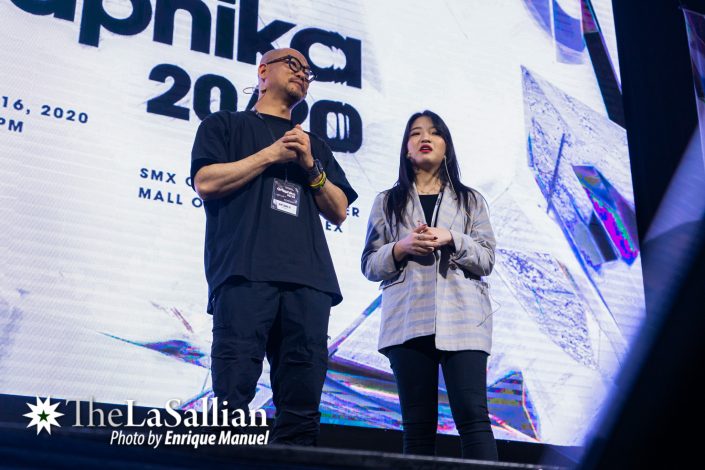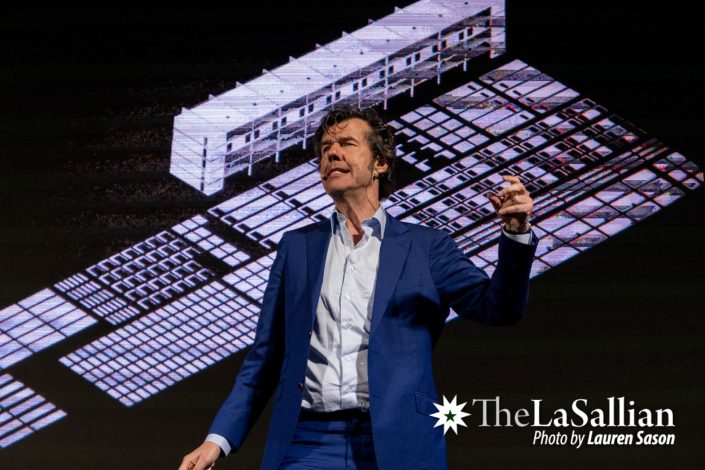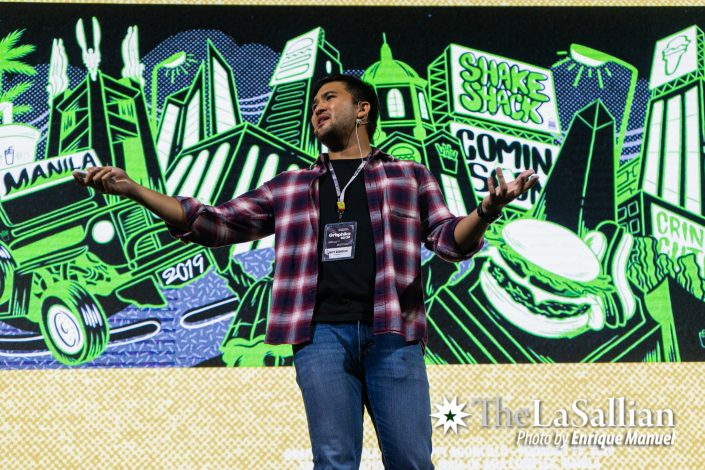Graphika 20/20, a conference comprised of renowned creatives and industry professionals, took place in the SMX Conference Center last February 15 to 16.
Now on its 15th year, previous years. This year’s theme zoned in on the creative vision—decorating the stage with monochromatic crystals to reflect the different perspectives and angles an artist can take. Hydra Design Group’s Pauline Despi and Joanne Malinis, members of the team behind Graphika 20/20’s branding, shared that their vision for the event was “a play on perspective that symbolizes the views of each person going to Graphika.”
Creation and perspective
One of the featured artists was Korean illustrator Kim Jung Gi, who conducted a live workshop. Throughout the 40-minute demonstration, Kim explained, with the help of a Korean-English interpreter, how the constant observation of real life figures have helped him create the detailed sketches he is known for.
He returned on the second day for another live demonstration, this time sketching out a jeepney in under an hour. Despite his grand illustrations, Kim always keeps an open mind toward his work. “I’m not perfect right now, but I’m studying, always,” he affirmed.
Local street artist Jappy Agoncillo, meanwhile, invigorated the audience with his discussion on the industry. The Lasallian alumni advised the audience on how to work as a freelancer. Despite the competitive nature of the industry, Agoncillo emphasized to “always remember that the goal isn’t to be the best; it’s to improve.”

Rounding the first day off was returning TV personality Robert Alejandro who opened up about his art and his personal life. The former host of Art is-Kool encouraged artists to explore the world, specifically Southeast Asia. Touching on his battle with depression and colon cancer, he emphasized the importance of a positive mindset.
The second day of Graphika 20/20 featured artists such as Vincent Aseo, an illustrator for Poster Posse. He recounted how creating classic posters of his favorite films enabled him to find his style, uniting his vector art and his pop culture favorites. “I’ve always wanted to do fan art. It’s the geek inside of me just trying to burst out,” he shared.
Industry insights
Throughout the conference, each speaker had lessons to impart. Though most revolved around the topic of art and aesthetics, many talked about the art industry and field itself.
Burnout was a running topic among many of the speakers. Kim expressed that when one starts drawing on paper, “there are times when [sketching is] nice and not very nice.” However, he mentioned that one should not let these things hinder oneself. “Don’t rush yourself. Enjoy what you’re doing,” he affirmed.
Another topic tackled was self-improvement, whether it be one’s artistic technique or work mindset. Each speaker had their own insights to share, but in the end, they emphasized the necessity of persevering through the process of creating. Agoncillo confessed that “there are ‘before’ pictures, and there are ‘during’ pictures.” He pointed out that one should not fixate on the end goal alone, and look back on the progress one has made in working toward it.
Agoncillo also touched on networking, expounding on building a reputation as a freelance artist by adding tags in illustrations posted to social media, or through self-promotion with business cards and stickers. “Allow them to find you,” he emphasized.
Likewise, graphic designer Stefan Kunz elaborated on his process throughout his 100-day Creative Challenge, saying that every artwork doesn’t have to be perfect, as long as the artist was able to complete it. “It’s a piece. You learned something. You tried something, and you go on,” he imparted.
Artistry in the sheets
Wrapping up the conference was Stefan Sagmeister. As one of the founding partners of the New York City-based design firm Sagmeister and Walsh, he returns once more since his last talk in the 2009 run of the conference.
Sagmeister presented a critique on aesthetics, expressing his disdain toward the modern fascination with functional—but monotonous—design. In one of his examples, he challenged the architecture of typical buildings. He was straightforward with his belief that having similar designs in all parts of the globe, despite cultural differences between countries, was “total stupidity.” He furthered this by claiming that every audience member “either had an iPhone, or a variation of the iPhone’s design.”
He advised listeners “to do more than remix; we can do new-ish things.” To him, an idea can begin as a remix, but it can be enhanced to become something beyond that.
The music and lights died down as Graphika 20/20 concluded its 15th iteration. Though the formula for each iteration has remained nearly the same, the crowds throughout the years have only grown.
Alejandro, who spoke in the 2007 run of the event, relayed that he “was already impressed with how large Graphika was,” adding that he observed how the event had gotten “bigger and bigger”. The event has seen almost 15 years of the growth of the Philippine art community. Previous members of the audience have now gone on to become speakers themselves, while others have returned to onstage to impart their knowledge. However, Alejandro noted that the community, through all its growth and grandness, is at its core just the same—“we’re still all artists.”
Correction: February 20, 9:05 pm
The article has been updated to make some typographical corrections.


